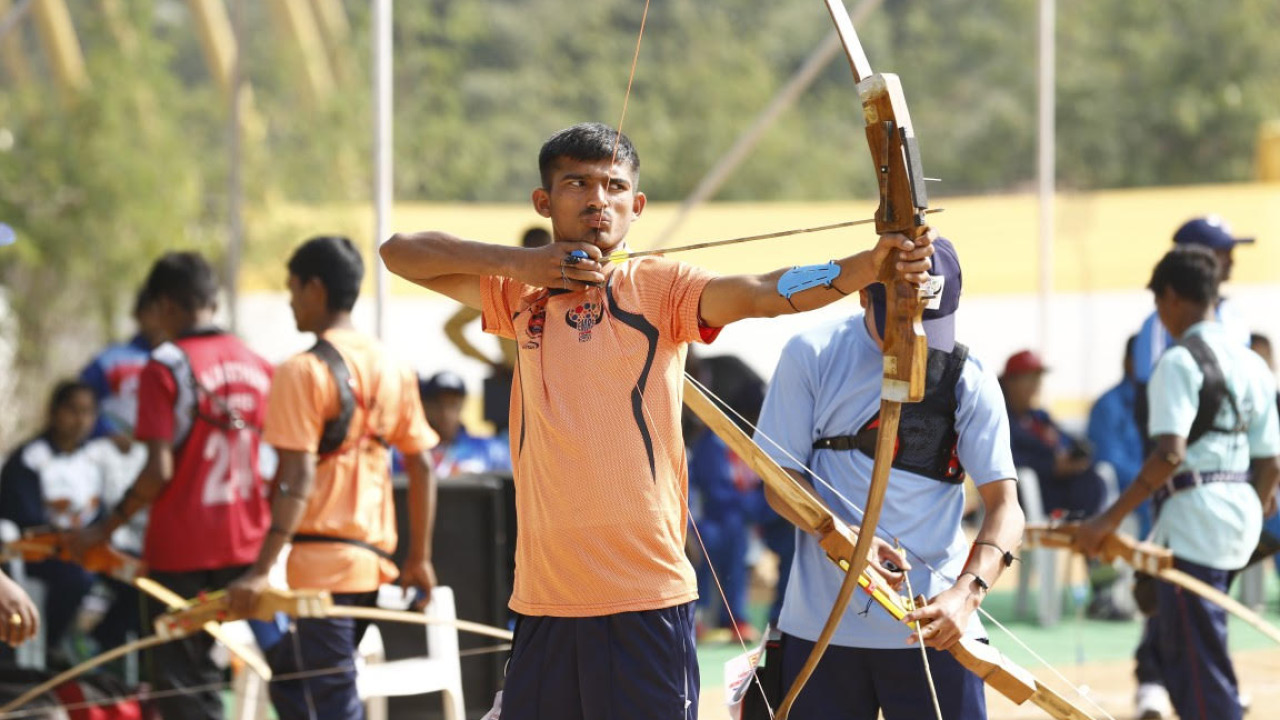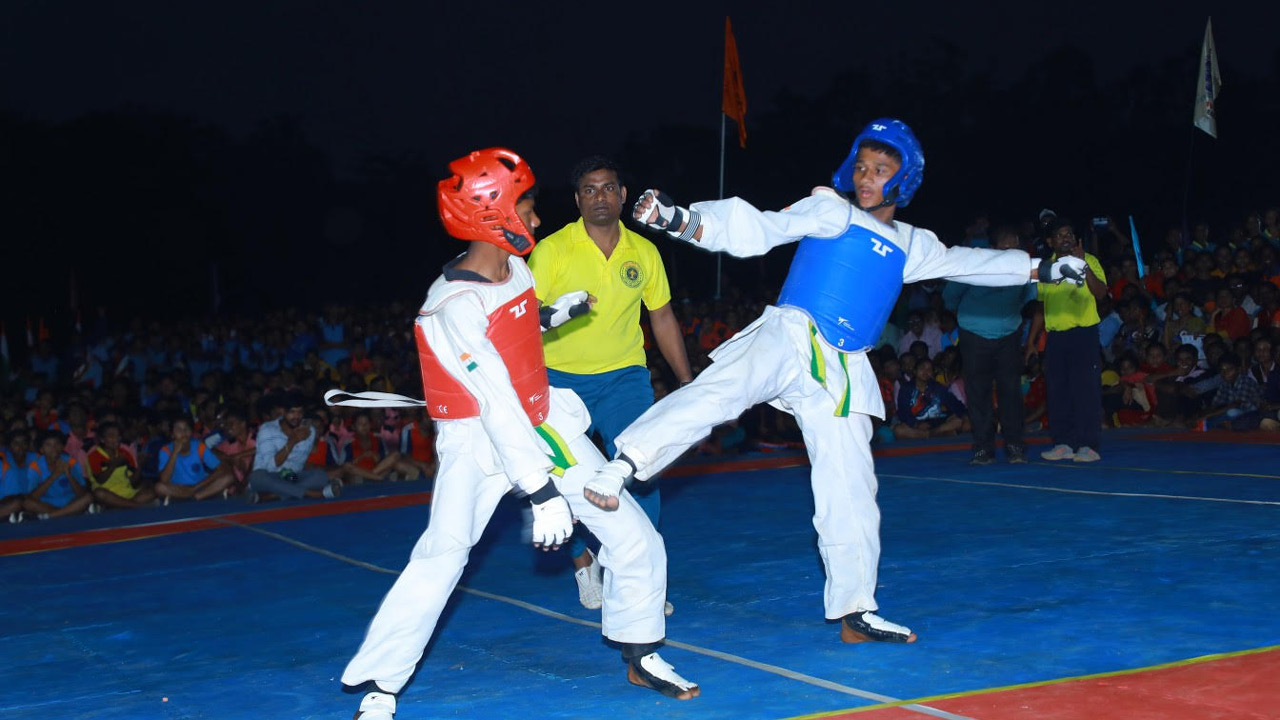Enhancing Sports Opportunities for Tribal Students in Telangana

Enhancing Sports Opportunities for Tribal Students in Telangana
Project Details
Category: Tribal Welfare – Land Rights and Resource Management
Project: Enhancing Sports Opportunities for Tribal Students in Telangana
Organisation: Tribal Welfare Department, Telangana
Start Date: 2021
Website: https://ts.meeseva.telangana.gov.in
The Telangana Eklavya Model Residential Schools (EMRS) embarked on an ambitious initiative to integrate sports into the lives of tribal students, addressing barriers to access, skill development, and community acceptance. This case study explores the challenges faced, the strategic solutions implemented, and the impactful outcomes achieved through this programme.
The EMRS programme was launched to provide quality education and holistic development opportunities for marginalised tribal communities across Telangana. Recognising the importance of sports for personal growth, the initiative aimed to nurture athletic talent within these communities. The project focuses on bridging the gap between tribal students and sports facilities, creating pathways for those with potential to excel at state and national levels.
Challenges Faced by the Community
- Reluctance to Leave Familiar Environments: For many tribal students, relocating from their villages to a sports-focused institution posed a significant challenge. The unfamiliar environment, combined with distance from family and traditional surroundings, led to initial resistance among students.
- Parental Hesitation: Parents of tribal students, often cautious about exposing their children to new and unfamiliar experiences, were hesitant to send them to sports institutions. Concerns about safety, cultural disconnection, and long-term benefits contributed to their reluctance.
- Lack of Access to Sports Facilities: In rural and tribal areas, sports facilities are scarce, leaving young people without proper platforms to develop athletic skills. Access to structured training or quality sports equipment was limited, hindering students’ ability to engage meaningfully in sports.
- Absence of Specialised Coaching: Due to limited exposure and resources, tribal students often lacked access to specialised coaching that could help them hone specific skills and participate in competitive sports.
- Limited Exposure to Competitive Opportunities: Without exposure to state or national-level competitions, tribal students remained unaware of their potential in sports. This lack of opportunity kept them from pursuing sports as a viable career option or pathway for personal growth.
An Eye on the Future
- Establishment of Sports Schools Across Telangana: EMRS set up multiple sports institutions across the state, strategically located to ensure accessibility for tribal students. These centers provided dedicated facilities for various sports, including rock climbing, mountaineering, archery, and athletics.
- Rigorous Training Programmes and Endurance Testing: Students interested in sports were selected based on their physical fitness and potential, followed by endurance and aptitude tests. Intensive training programmes were then offered, which focused on skill development, physical endurance, and mental resilience.
- Provision of Free Amenities and Equipment: Recognising financial constraints, the programme provided essential items such as clothing, sports shoes, school bags, and sports equipment free of charge. These resources ensured that financial barriers did not hinder students’ ability to participate fully in sports activities.
- Parental Counseling and Community Engagement: EMRS engaged parents through regular counseling sessions, highlighting the benefits of sports training and education. By educating parents on the importance of sports in building discipline, physical health, and career opportunities, the initiative succeeded in gaining community trust and support.
- Tailored Training Programmes and Cultural Sensitivity: Training programmes were designed to respect tribal traditions while encouraging athletic growth. Specialised coaches, aware of the cultural backgrounds of students, ensured that training incorporated elements familiar to tribal lifestyles, making the transition smoother and more relatable for students.
Benefits and Empowerment of Students
- National and State-Level Sports Achievements: Students began participating in competitions at both state and national levels, achieving remarkable success. Many secured top positions in sports such as volleyball, yoga, and athletics, competing in major events and championships.
- Enhanced Physical and Academic Development: In addition to sports achievements, students experienced improved physical health and academic performance. The physical and mental discipline fostered by sports training translated into better focus and engagement in academic activities.
- Community Support and Increased Participation: The visible success of students in sports events led to a shift in community perception regarding sports education. Parents and community members began to view sports as a viable and beneficial aspect of education, resulting in increased participation from younger students.
- Opportunities for Scholarships and Higher Education: Talented students began receiving scholarships to support their further education and training. These scholarships not only helped financially but also motivated students to continue pursuing sports as a career, aiming for higher education institutions specialising in sports.
- Career Pathways and Personal Growth: For many students, sports training provided the foundation for a future career. Programmes such as mountaineering and archery opened up new pathways, with students envisioning careers in sports, coaching, or related fields. The initiative cultivated leadership skills, resilience, and a sense of pride among students, who became role models in their communities.
Conclusion
The sports initiative by EMRS in Telangana has demonstrated the transformative potential of structured sports programmes in tribal communities. By addressing logistical, financial, and cultural barriers, the project enabled students to explore new opportunities and excel in areas previously inaccessible to them. The success of the programme serves as a model for replicability across similar institutions, highlighting how targeted interventions can unlock the latent potential of marginalised communities and contribute to inclusive development.
The initiative’s success underscores the importance of community engagement, financial support, and culturally sensitive approaches in promoting holistic growth for underserved populations. As more students from tribal backgrounds achieve recognition in sports, they pave the way for future generations to embrace sports as a path toward empowerment and excellence.



